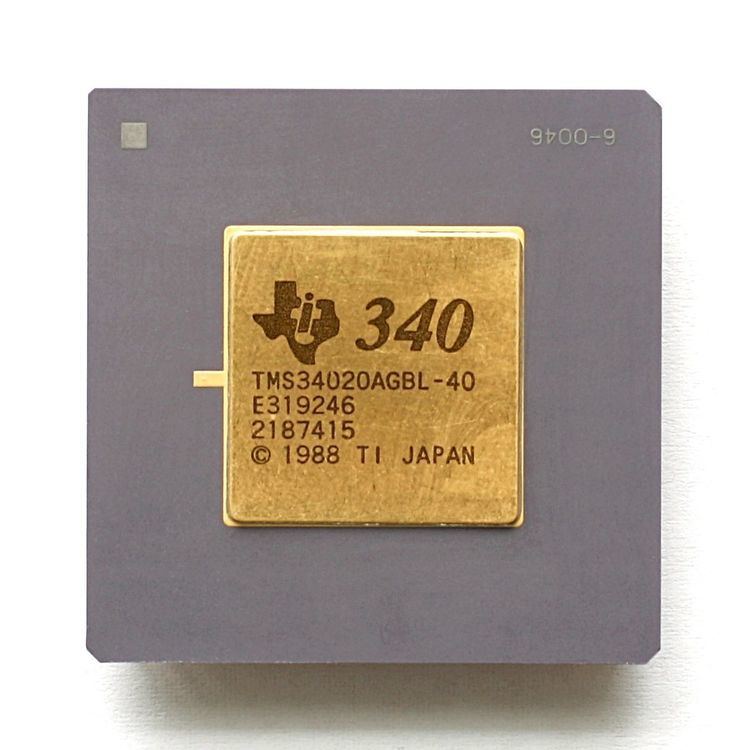 | ||
The TMS34010, released in 1986, is the first programmable graphics processor integrated circuit. It is a full 32-bit processor which includes graphics-oriented instructions so it can serve as a combined CPU and GPU, and it was used as such in a number of high-profile arcade games such as Mortal Kombat and NBA Jam.
Contents
Design took place at TI facilities in Bedford, UK and Houston, Texas, U.S.A. First silicon was working at Texas Instruments (TI) in Houston in December 1985, and first shipment (a development board) was to IBM's workstation facility in Kingston, New York, in January 1986.
The TMS34010 is a bit addressable, 32-bit processor, with two register files, each with fifteen general purpose registers and sharing a sixteenth stack pointer register. Unlike all other microprocessors up to that time, it includes instructions for drawing into two-dimensional bitmaps, arbitrary variable-width data, and arithmetic operations on pixel data. The TMS34010 is not limited to executing hardwired primitives, and is capable of executing any general-purpose program in addition to graphics programs. The TMS34010 is supported by a full ANSI compliant C compiler.
The successor to the TMS34010, the TMS34020 (1988), provides several enhancements including an interface for a special graphics floating point coprocessor, the TMS34082 (1989). The primary function of the TMS34082 is to allow the TMS340 architecture to generate high quality three-dimensional (3D) graphics. The performance level of 60 million vertices per second was advanced at the time.
Arcade games
The TMS34010 was used in many arcade games of the late 1980s through the 1990s.
From Atari Games
From Williams / Midway
From MicroProse Games
Video cards and accelerators
The TMS34010 was used on a video card for an Apollo/Domain workstations. It was an Appian Graphics Rendition IV.
It was used in the first commercially successful Windows accelerators in 1990 and 1991, usually referred to as "TIGA" products (Texas Instruments Graphics Architecture).
The "Rambrandt" Amiga extension card from Progressive Peripherals & Software supported up to four TMS34020, for use in virtual reality simulations. The chip was also used in the Commodore Amiga A2410 graphics card found in the A2500 based Unix workstation.
The Aura Scuzzygraph, Radius PowerView and Radius SuperView external SCSI graphics cards for Apple Macintosh computers were also based on the TMS34010.
Attempted game console
TI made an unsuccessful effort in 1987 and 1988 to convince games makers such as Nintendo and Sega to write 3D games and create a new console market. In 1987 TI provided the first demonstration of true real-time 3D games with stereo sound effects on a personal computer (PC), using a small TMS34010 adapter card (called "The Flippy"). The Flippy was designed as the basis of a game development system for consoles and as a PC gaming card in its own right.
